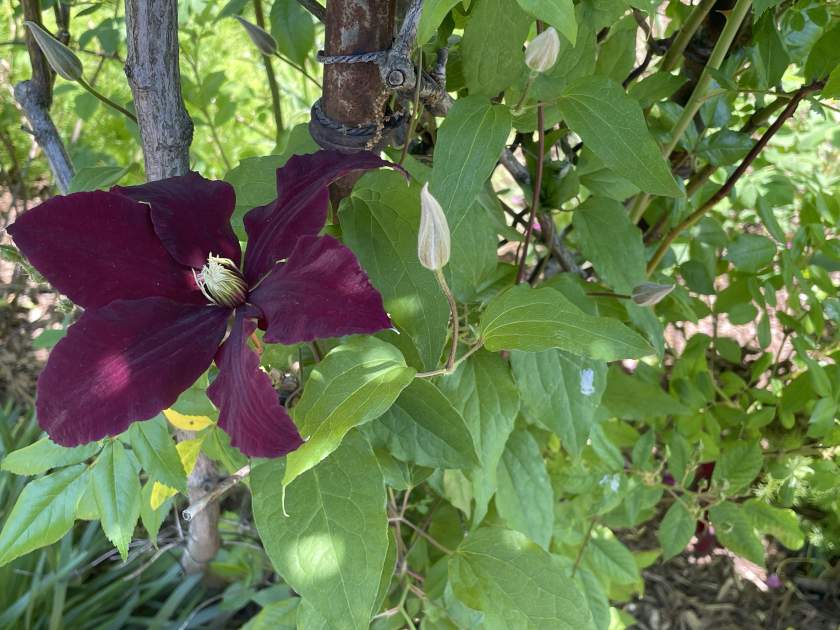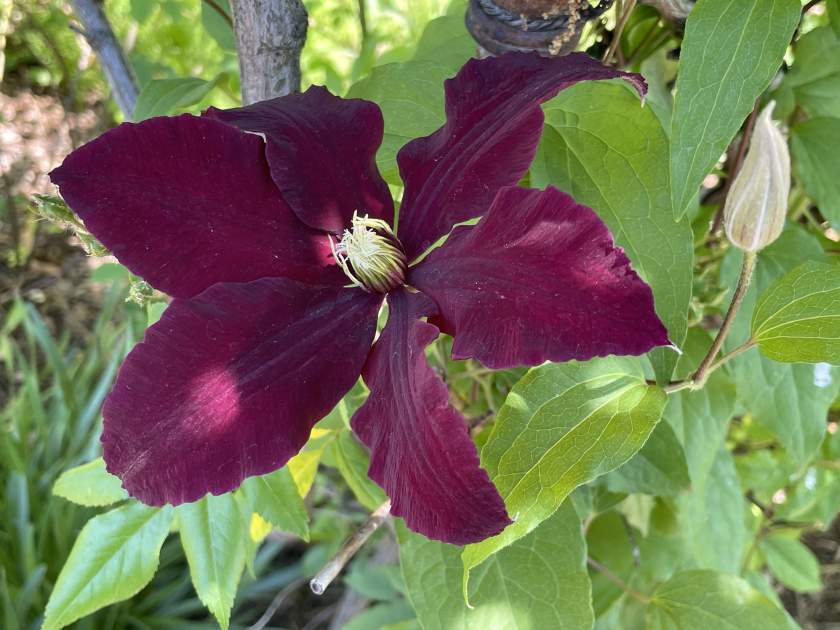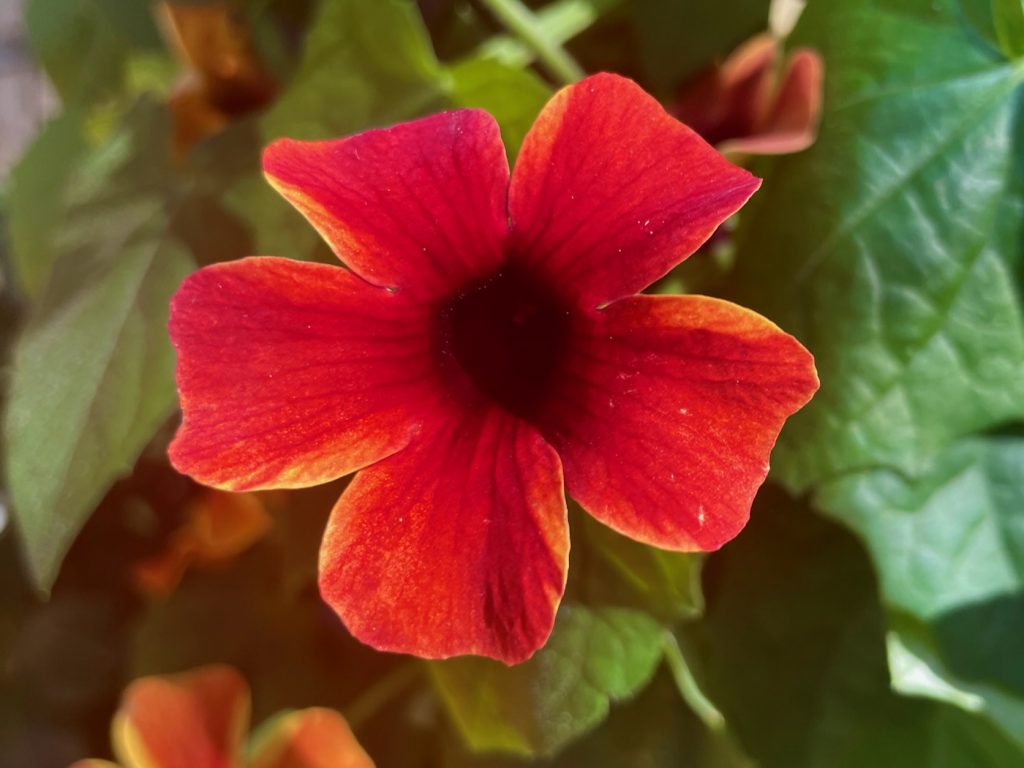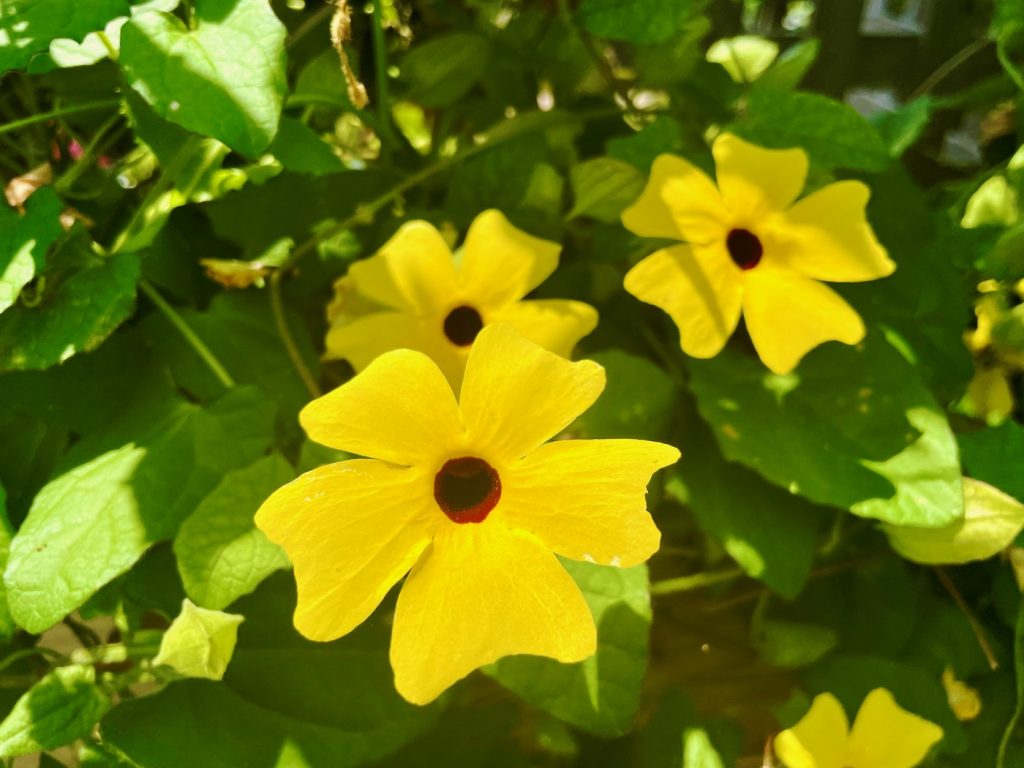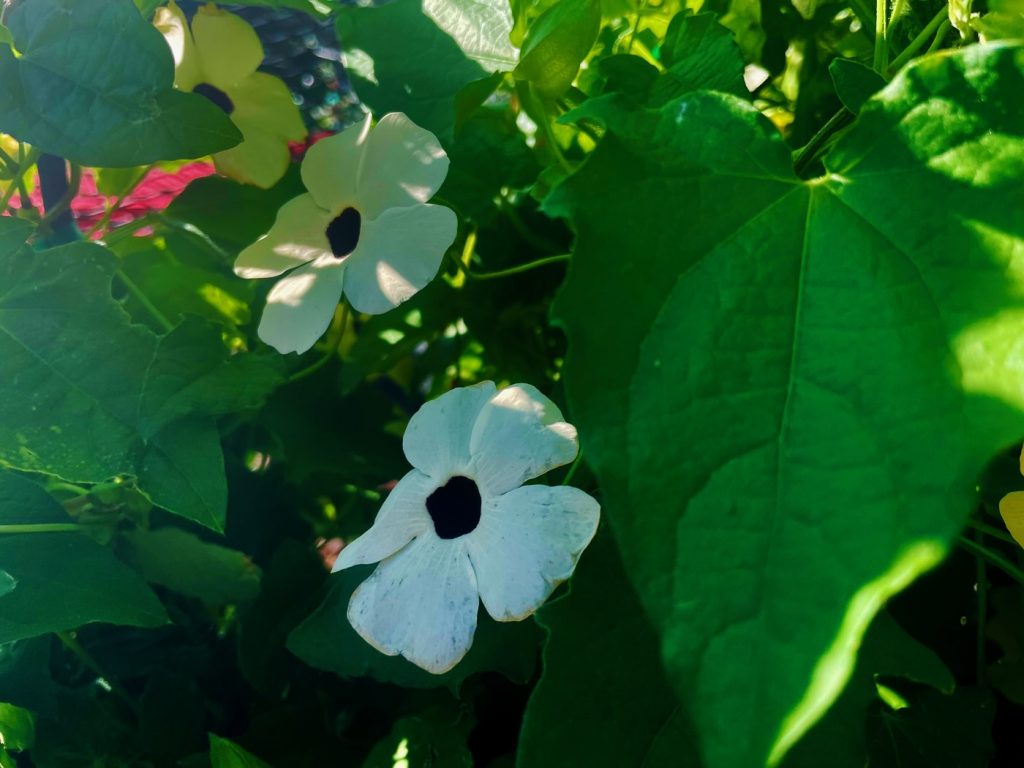Discover the Alluring Beauty of Clematis ‘Niobe’: A Velvety Ruby-Red Clematis with Golden Stamens
Clematis ‘Niobe’ or Niobe clematis is a captivating clematis variety that has been enchanting gardeners since its introduction in 1975. With its large, velvety, deep ruby-red flowers adorned with contrasting butter-yellow anthers, this clematis is a true showstopper.
The broad sepals, tapering towards the tips, maintain their vibrant color throughout the season. ‘Niobe’ blooms from late spring to early fall, making it an excellent choice for small gardens, containers, arbors, and fences. In this article, we will explore the characteristics, cultivation requirements, and propagation methods of Clematis ‘Niobe’, helping you appreciate its stunning beauty in your own garden.
Clematis ‘Niobe’ is a striking clematis variety that captivates with its large, velvety, deep ruby-red flowers and contrasting butter-yellow anthers. Bred by Wladyslaw Noll in Poland in 1975, ‘Niobe’ has been a beloved choice for gardeners around the world. With its long flowering season, adaptability to various growing conditions, and compatibility with trellises, walls, fences, and containers, this clematis variety offers endless possibilities for adding beauty and charm to your garden.
Characteristics:
Clematis ‘Niobe’ is distinguished by its profuse, large flowers that measure around 6 inches (15 cm) in diameter. The velvety deep ruby-red petals are complemented by striking butter-yellow anthers, creating a visually striking display. The sepals, numbering 6-8, are broad at the base and taper towards the tips, adding elegance to the overall appearance. ‘Niobe’ is known for its long flowering season, which can extend from late spring to early autumn, ensuring months of vibrant color in the garden.
The vine can reach a length of 8-10 feet (240-300 cm) and is an excellent choice for training on trellises, walls, fences, or arbors. It also pairs beautifully with climbing roses, creating a harmonious blend of colors and textures. Clematis is a genus within the Ranunculaceae family and is renowned for its beautiful, showy flowers. ‘Niobe’ is a popular cultivar of Clematis that features deep, rich red flowers.
Cultivation of Clematis ‘Niobe’:
Sunlight: Full Sun to Part Shade Clematis ‘Niobe’ thrives in moist, well-drained soils and performs best when planted in full sun or part shade. It is beneficial to provide some afternoon shade, especially in hot summer areas, to protect the plant from excessive heat and maintain its overall health.
Watering: Regular Watering, Especially in the First Year To ensure the optimal development of Clematis ‘Niobe’, regular watering is crucial, particularly during the first year after planting. Maintain consistent soil moisture levels, but avoid overwatering, as it can lead to root rot. Monitor the soil moisture and adjust the watering frequency based on the weather conditions.
Soil: Well-Drained Soil with a Slight Acidity Preference Clematis ‘Niobe’ thrives in well-drained soil that retains some moisture without becoming waterlogged. While it can tolerate a wide range of soil pH levels, it generally prefers slightly acidic soil. Adding organic matter, such as compost or well-rotted manure, during planting can improve soil fertility and drainage.
Pest and Disease Management: Regular Inspections and Prompt Treatment Although Clematis ‘Niobe’ is relatively resistant to pests and diseases, it may still be vulnerable to common issues such as aphids, powdery mildew, and clematis wilt. Regularly inspect the plant for any signs of infestation or disease, and take appropriate measures, such as applying organic or chemical treatments, as soon as problems are detected.
Propagation:
Clematis ‘Niobe’ can be propagated through several methods, including softwood cuttings, division, or layering. Softwood cuttings are typically taken in spring or early summer. Select a 4-6 inch section of stem from the current season’s growth, remove the lower leaves, dip the cut end in rooting hormone, and plant it in a pot filled with moist potting mix. Provide warmth and ample sunlight, ensuring the potting mix remains consistently moist. In approximately 4-6 weeks, the cutting should develop roots and can be transplanted into a larger pot or directly into the garden.
Pruning: Group 2 Pruning Recommended Clematis ‘Niobe’ belongs to Group 2 clematis, which includes varieties that flower on both old and new wood. For woody-stemmed members of this group, minimal pruning is usually necessary. However, if pruning is required, it is best to do so in late winter or early spring before new growth begins. Remove any dead or weak stems, and prune back to a pair of healthy buds, just above them. Avoid heavy pruning, as it may result in a loss of flowers.
By providing the ideal sunlight, watering, and soil conditions, along with regular inspections for pests and diseases, you can ensure the flourishing of Clematis ‘Niobe’ in your outdoor space. Additionally, with knowledge of propagation techniques, you have the opportunity to propagate this captivating clematis and share its splendor with other gardening enthusiasts.
